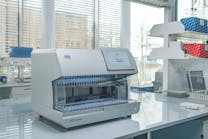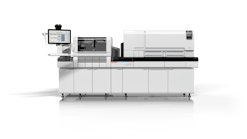Automation: Continued innovation and evolution in clinical laboratories
Clinical laboratory automation can improve the quality, efficiency, safety, and cost-effectiveness of laboratory operations and continues to evolve and expand into areas such as specimen handling, accessioning, testing, and inspection readiness. Innovation and evolution must focus on patient results as well as front-to-back sample handling with a robust informatics presence. Laboratories can benefit from the standardization that adding automated processes delivers. From automating rerun and reflex testing to smear production and digital image output, laboratories can do more with less, and consistently, across a health system. Automation applies across the spectrum of laboratories from lower volume, rural laboratories to the highest-volume reference laboratories. More and more scalable options are available in today’s market that will provide a seamless approach such as pairing an integrated digital imaging analyzer in the core lab with a benchtop digital imaging analyzer in the satellite lab via the lab’s internal network to ensure consistent and timely result interpretation and pathology consults across the health network.
Manufacturers must keep a pulse on laboratories and laboratorians to understand current needs as well as what labs of the future might look like. Labor shortages continue to plague clinical laboratories. While at the same time, testing is absolutely critical to patient care in diagnosing disease, monitoring patient care, and determining overall wellness. New tests are developed all the time; yet the number of people available to run the tests is in rapid decline. Due to a lack of high school and college student awareness and interest in clinical lab science programs and a decrease in the number of programs available, the challenge may only worsen.
Each manufacturer should shoulder some responsibility to contribute to the foundation of what it is to be a medical laboratory scientist. Interfacing with laboratorians is an integral part of the business. By continually seeking the voice of the customer information, invaluable feedback will guide the way through current, on-market product enhancements, improvements to the product development process, and understanding where needs are greatest in the laboratory. Building a two-way communication channel is imperative to ensure that laboratorians can submit feedback and that the manufacturer proactively seeks input. This builds trusting relationships and partnerships across the industry.
With the ever-present labor shortage, it is imperative that we look for ways to provide automation from pre-analytical to post-analytical touchpoints and ultimately sample storage — it is beyond generating best-in-class patient results, it must be a best-in-class solution. Offering complementary products to enhance sample management can alleviate many labor shortage pain points. Adding a de-capper to your automated urinalysis solution can eliminate a manual step in the process. Similarly, adding erythrocyte sedimentation rate and A1c testing to your automated hematology solution can minimize the number of touchpoints of every lavender top tube in the laboratory. Adding tube sorting and archiving functionality can provide even further relief. And there are scalable solutions available to meet the needs of any sized laboratory. Adding an automated hematology quality control (QC) and maintenance module paired with a QC management software package such as Sysmex America’s BeyondCareSM Quality Monitor (BCQM) will take the guesswork out of QC management by automatically performing QC and the start-up and shutdown of a system based on customized settings specifically to meet each lab’s needs. Take it a step further and connect through total lab automation (TLA) and the laboratory will realize the relief that front-to-back automation can bring.
And it is not just about the large-volume facilities in urban areas. The smallest rural facilities are also feeling the labor shortage pain and are in the greatest need to automate their processes. It is critical that manufacturers continue to work together on behalf of the laboratory's needs to ensure a seamless total laboratory automation experience. This alleviates a great deal of stress and pressure on the staff, freeing them up to perform critical functions in the laboratory when there simply just are not enough people. Scalable solutions are available that will provide relief to all labs. Quality control management software with on-demand, peer-comparison reports and the ability to perform daily calibration verification ensures inspection readiness at all times. Using dedicated software programs can also provide troubleshooting measures for the operator to take the guesswork out and drive consistency across all users and across all laboratories in a health system. And no matter the size of the lab or the volume of samples run, adding automation via hardware and software eases much of the heavy lifting.
The ability to provide state-of-the-art laboratory equipment with the capability to perform functions from pre- to post-analytics with innovative informatics and automated quality control management and daily automated calibration verification will ensure the best-in-class patient care but may also aid in recruiting best-in-class staff. Let the feedback loop guide development from one generation of products to the next to ensure we garner interest in the field and grow the next generation of laboratorians.





